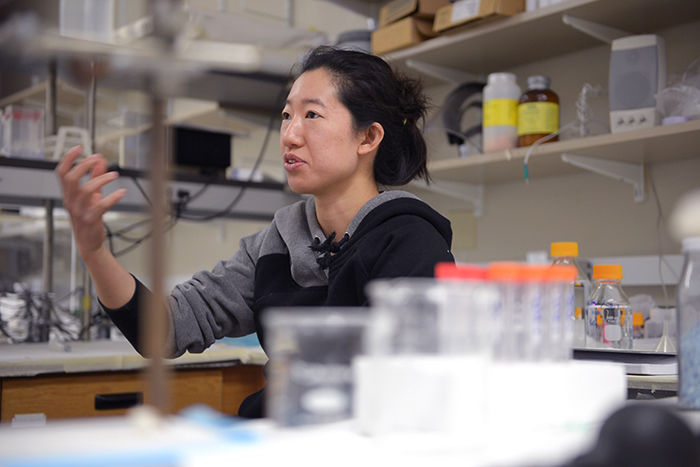‘A cultural chameleon’
Bonito Goh, an immigrant from Singapore, talks about her ability to assimilate to different cultures because of her background.
April 19, 2017
Bonita Goh, a doctoral candidate in chemistry, was born in the Republic of Singapore.
The population of Singapore is almost three-quarters ethnic Chinese, with ethnic Malay and Indians making up most of the remaining minority populations. Since each group has a different mother tongue, the common language spoken is English.
“I wish that we had more of an identity,” Goh said. “There are some aspects of our identity that are cobbled together over the individual identities of our constituent ethnicities.”
The one truly Singaporean cultural highlight is Singlish, a motley combination of words and structures from the Chinese, Malay, Indian and English languages.
“As a people, we are proud of our identity as reflected in Singlish. It reflects a lot about our culture,” Goh said. “It is not Chinese, it is not Malay, it is not Indian.”
Goh said the Singaporean government tried to stamp out Singlish, but its use has persisted due to a sense of pride, even among the educated classes. This pride comes from Singlish itself and the ability to “code switch,” as Goh put it, between Singlish and more standard forms of English.
Having lived in Singapore, Michigan and Austria prior to Pullman, Goh said she never had problems convincing people she was one of them. She formed friendships and meaningful connections everywhere she lived.
“My mother calls me a cultural chameleon,” Goh said.
For Goh, the idea of code switching extends to navigating within and between cultures and finding commonality with people who come from different cultural contexts.
“Having come from ancestors who are immigrants and a country that values diplomacy over all other facets of national security,” Goh said, “I see that as a fundamental value, to be able to connect with someone of a different culture and recognize commonality.”










